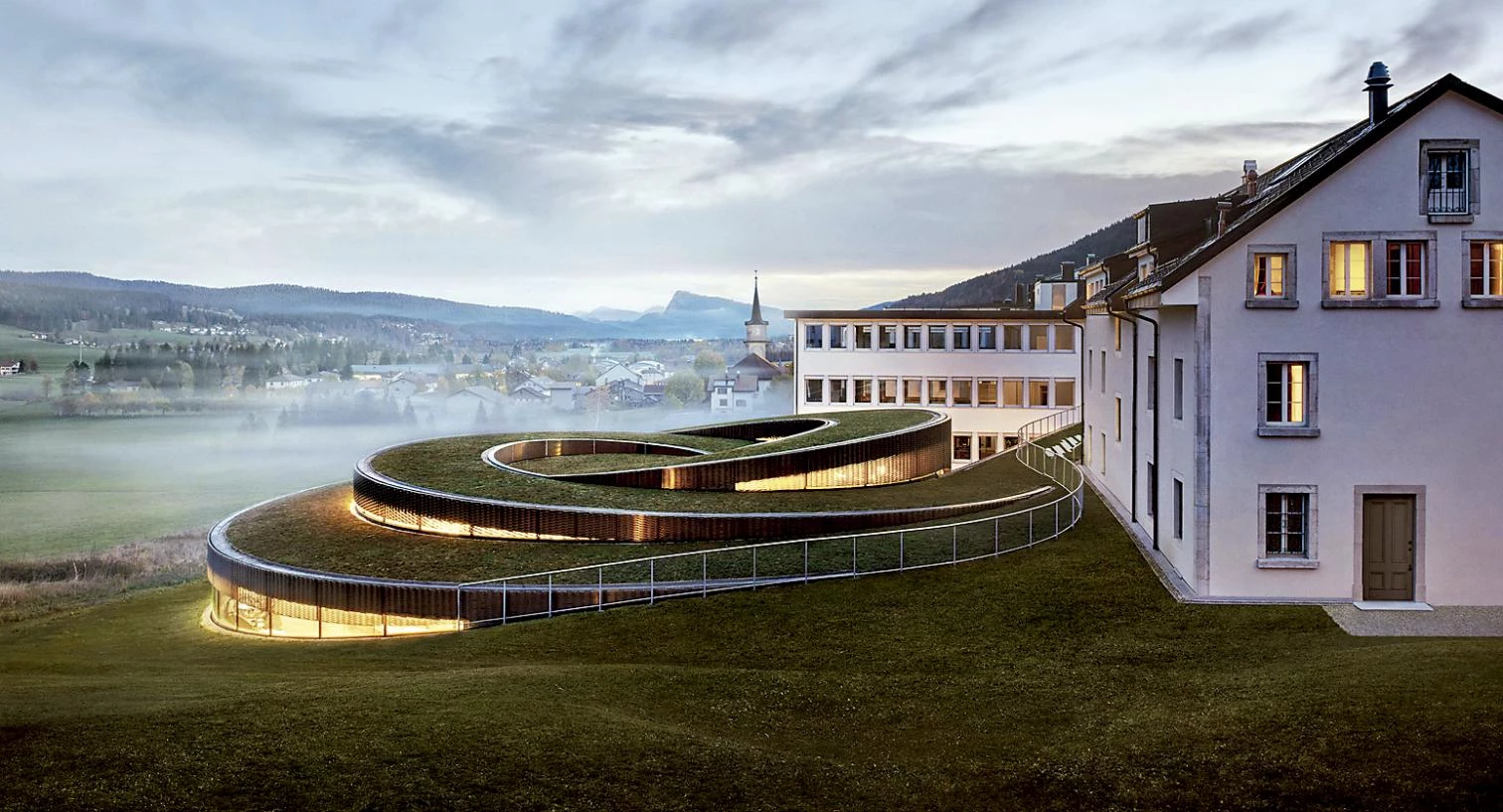
One of the recurring motifs in the already very extensive oeuvre of the Danish architect Bjarke Ingels is the spiral. If for architects in past times the spiral was an expression of movement, for Ingels it is also something that has the capacity to give expressive continuity to a whole diversity of situations, as well as a figure with the power to generate highly attractive, alluring images. This is true in the Musée Atelier Audemars Piguet, which BIG has now wrapped up for the prestigious watchmaker at its headquarters in the village of Le Brassus (Switzerland).
Located in a beautiful natural enclave, the complex is conceived to be a nexus between the tradition of Audemar Piguet – which has remained a family enterprise since its founding in the year 1875 – and the brand’s spirit of innovation, and also as a liaison between the other buildings of the place and the landscape all around. Hence the pavilion coils around itself in forming a visitor’s journey through the company’s history and the process of designing and manufacturing its watches. The result is like Frank Lloyd Wright’s Solomon R. Guggenheim Museum in New York, the shape of which is indistinguishable from the exhibition route harbored inside. In the Audemar Piguet case, the spiral seems to rise out of the ground in what is already a familiar, snaking play of green roofs and glass bands.





